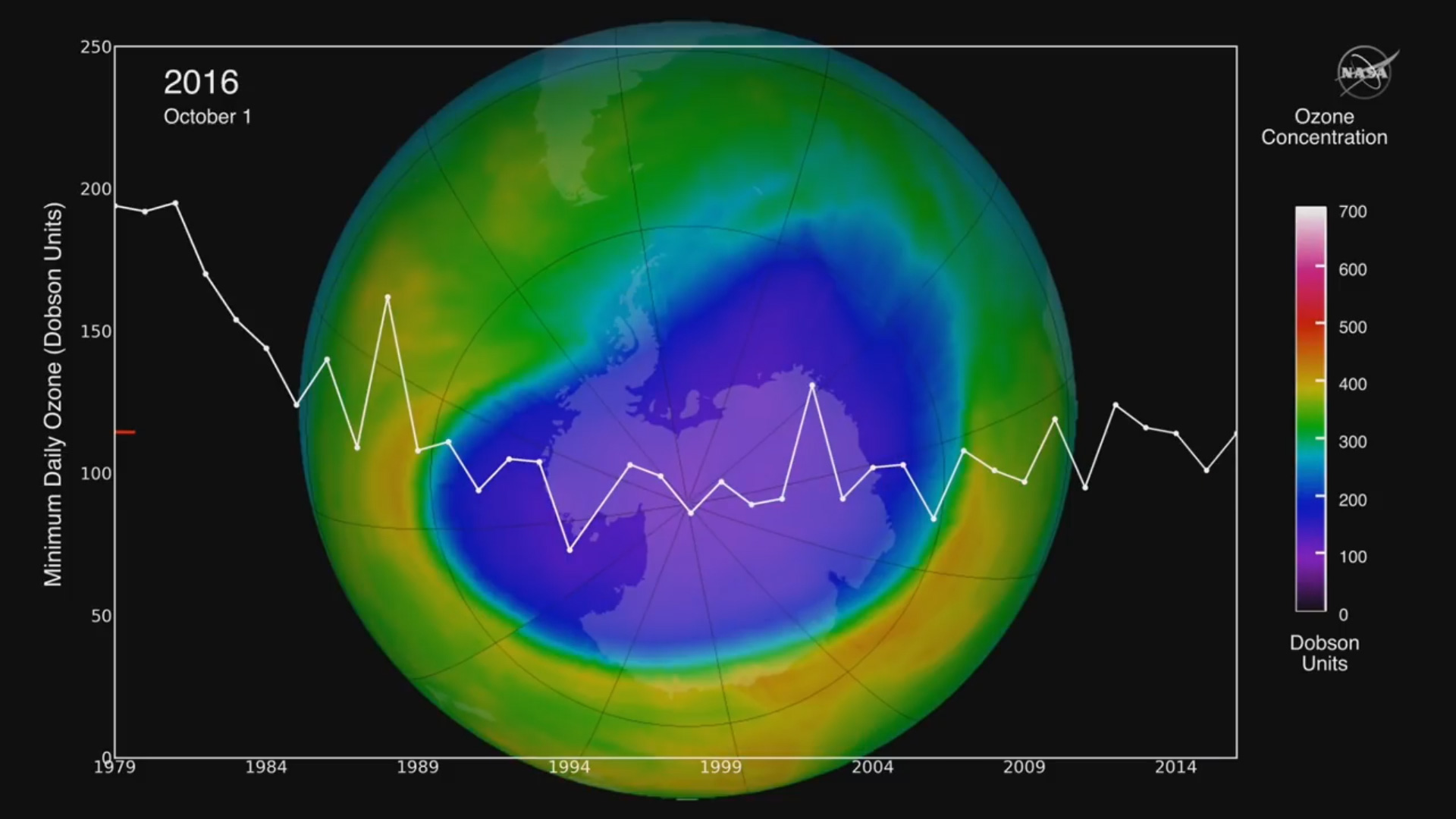The Antarctic ozone hole is growing again
A new study finds up to 26% Antarctic ozone reduction since 2004, a trend since a couple of years - especially during the past three years. While the Montreal Protocol is widely hailed as a success by phasing out ozone depleting chemicals like chlorofluorocarbons (CFCs), the current measurements suggest other atmospheric circumstances may be involved.
A new study finds up to 26% Antarctic ozone reduction since 2004, and trending in recent years – especially during the past three years. The Montreal Protocol is widely hailed as a success by phasing out ozone depleting chemicals like chlorofluorocarbons (CFCs), the current measurements suggest other atmospheric circumstances may be involved.
While the study does not point to a sole culprit, the researchers note that the Antarctic polar vortex, a low pressure swirl of cold, westerly winds, may also drive ozone depletion.
And further the authors mention that the 2022 Scientific Assessment of Ozone Depletion concluded that the Antarctic ozone hole should be on track to recover by 2065. But the latest results, however, indicate that recovery may be delayed due to previously unaccounted for chlorine release from wildfire aerosols and anthropogenic emissions.
Recent studies connected the smoke from the 2020 Australian fires to ozone layer depletion (of about 3%–5%) over the southern midlatitudes, suggesting that the record wildfires in Canada in 2023 may also impact Earth’s protective ozone layer.
Potential drivers of the recent large Antarctic ozone holes
The past three years (2020–2022) have witnessed the re-emergence of large, long-lived ozone holes over Antarctica. Understanding ozone variability remains of high importance due to the major role Antarctic stratospheric ozone plays in climate variability across the Southern Hemisphere. Climate change has already incited new sources of ozone depletion, and the atmospheric abundance of several chlorofluorocarbons has recently been on the rise.
In this work, we take a comprehensive look at the monthly and daily ozone changes at different altitudes and latitudes within the Antarctic ozone hole. Following indications of early-spring recovery, the October middle stratosphere is dominated by continued, significant ozone reduction since 2004, amounting to 26% loss in the core of the ozone hole. We link the declines in mid-spring Antarctic ozone to dynamical changes in mesospheric descent within the polar vortex, highlighting the importance of continued monitoring of the state of the ozone layer.
This paper by Kessenich et al. shows that the #ozone concentrations over the #Antarctic have been steadily declining in mid-spring in the recent years due to changes in descending air at the core of the #OzoneHole.https://t.co/V7RjS0waov pic.twitter.com/ARUaUzpV3O
— Nature Communications (@NatureComms) November 22, 2023
Related
Ozone Depletion From Pole To Pole And Its Linkages To Climate Change
PFAS: A Case Study on its Current Costs and How to Regulate Toxic Chemicals in the Future
Chemicals like Dichlorodiphenyltrichloroethane (“DDT”) and Chlorofluorocarbons (“CFCs”) that seemed invaluable to human society were eventually phased out and banned after their negative effects were discovered. Moving forward, Per- and polyfluoroalkyl substances (“PFAS”) must be added to this list. The current phase out rate is moving too slowly, increasing eventual remediation costs, and negative health effects in people exposed.
- What the Hole in the Ozone Layer Tells Us About PFAS https://www.waste360.com/pfas-pfoas/what-hole-ozone-layer-tells-us-about-pfas
- Analysis of ice cores shows increasing levels of three short-chain PFAS linked to CFC replacement chemicals https://cen.acs.org/environment/persistent-pollutants/CFC-replacements-source-persistent-organic/98/web/2020/05
- Could the world go PFAS-free? https://www.nature.com/articles/d41586-023-02444-5
- Slight Elevated Ozone Impairs Insect Mating – Results In Same Sex Mating Behavior https://climatestate.com/2023/06/20/air-pollution-slight-elevated-ozone-impairs-insect-mating-results-in-same-sex-mating-behavior/
